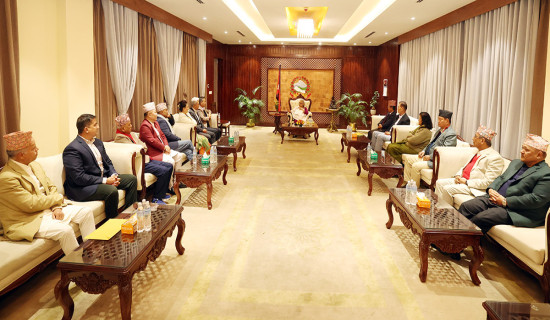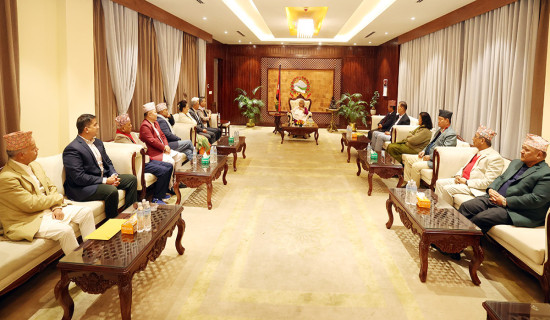- Sunday, 30 November 2025
Potential Of Telemedicine In Nepal
In recent years, telemedicine has gained popularity in Nepal with limited healthcare access in many of its remote areas. Telemedicine becomes a potent instrument to close the healthcare gap between urban and rural areas as infrastructure advances and technology becomes more widely available. Telemedicine has the potential to transform healthcare delivery in Nepal with adequate planning, funding, and implementation.
Telemedicine is the use of digital information and communication technology to support and deliver healthcare when participants are separated by distance. It includes services such as monitoring, consultations, remote diagnostics, and even training for health professionals. As the logistical and geographic limitations significantly impede the provision of healthcare in Nepal, telemedicine presents a creative and effective solution.
Strategic priority
The healthcare system in Nepal is distinguished by the concentration of facilities and qualified health professionals in major cities. With about 80 per cent of the population in rural areas, even the most basic health care is sometimes unavailable. Inadequate transportation systems, a high frequency of natural disasters, and harsh climate has compounded the challenges of getting to these places. Many people are forced to travel great distances sometimes, for days at a time, in order to receive medical care that puts a heavy financial and physical burden on them.
Furthermore, the lack of healthcare professionals, especially experts, is a serious problem facing the nation. Rural populations are severely underserved due to the scarcity of healthcare experts or their noticeable concentration in urban regions. Therefore, telemedicine may serve as a remedy to this imbalance. Nepal has already started the process of incorporating telemedicine into its system of healthcare. Numerous private organisations and institutions have started offering telehealth services. Telemedicine has also been included in health plans and recognised as a strategic priority by the government through the Ministry of Health and Population.
Telemedicine initiatives in isolated regions have benefited from its services. Certain hospitals have already set up teleconsultation systems in order to provide timely diagnosis and treatment recommendations that link rural health posts with specialists in urban areas. These programmes are still not regular and not scaled up throughout the country. This results in an uneven access and highlights the urgent need for a coordinated national telemedicine strategy.
The main advantage of telemedicine in Nepal is its better access. People in remote locations can communicate with specialists in urban hospitals. This significantly decreases expenses, saves time, and lessens the amount of money lost as a result of missed work. Telemedicine can be a life-saving tool for vulnerable and marginalized groups, such as the elderly, the disabled, and women.
Telemedicine platforms can be utilized for teaching, mentorship, and continuing medical education in addition to providing direct patient care in rural areas. This encourages information exchange and guarantees that even health professionals in far-flung locations remain conversant with emerging standards and procedures.
Both patients and providers experience a large reduction in operating costs as a result of telemedicine. By cutting down on pointless referrals, the government may lessen the strain on already overstretched tertiary hospitals. It removes the costs of travel, lodging, and extended time away from work for patients, particularly those in underserved areas. Despite enormous potential, a number of obstacles need to be overcome before telemedicine in Nepal can reach its full potential.
For telemedicine to work, digital devices, steady supply of electricity, and dependable internet connectivity are necessary. These fundamental requirements are still lacking in many rural regions. These restrictions can be lessened by investments in solar-powered devices and telecommunications, but these initiatives need consistent financing and coordination. Effective use of telemedicine solutions depends on patients' and healthcare professionals' digital literacy. To guarantee that users can utilize the technology with assurance and security, training programmes must be organized regularly.
A thorough legal and regulatory framework for telemedicine is still lacking in Nepal. Clear consideration must be given to matters like medical liability, data privacy, and patient confidentiality. To guarantee patient safety and trust, standardizing protocols and establishing quality standards are essential. In Nepal, a large number of telemedicine initiatives have been driven by donors or have relied on short-term finance. The government must encourage public-private collaborations, encourage local innovation, and include telemedicine into national health expenditures for long-term effects.
Bright future
Given the continued growth in internet connectivity and mobile phone adoption, telemedicine in Nepal appears to have a bright future. The Nepal Telecommunications Authority reports that even in remote areas, internet connectivity is growing quickly and that more than 90 per cent of people have access to smart phones. By taking advantage of this trend, Nepal can create a strong telehealth ecosystem having interface with digital public health systems and electronic health records in addition to facilitating distant care.
Although telemedicine is not a panacea, it has the potential to be incredibly revolutionary in a nation like Nepal. It can improve healthcare, lessen inequality, and enhance general health outcomes by using digital tools to link people to necessary health services. Investing in telemedicine should be viewed as a strategic need rather than a choice as Nepal moves closer to achieving universal health care. Nepal has the potential to lead the area in telehealth innovation with vision, planning, and teamwork, guaranteeing that no citizen, no matter where they live, is left behind.
(Dr. Lohani is the executive director at the Health Concern. lohanis@gmail.com)

















